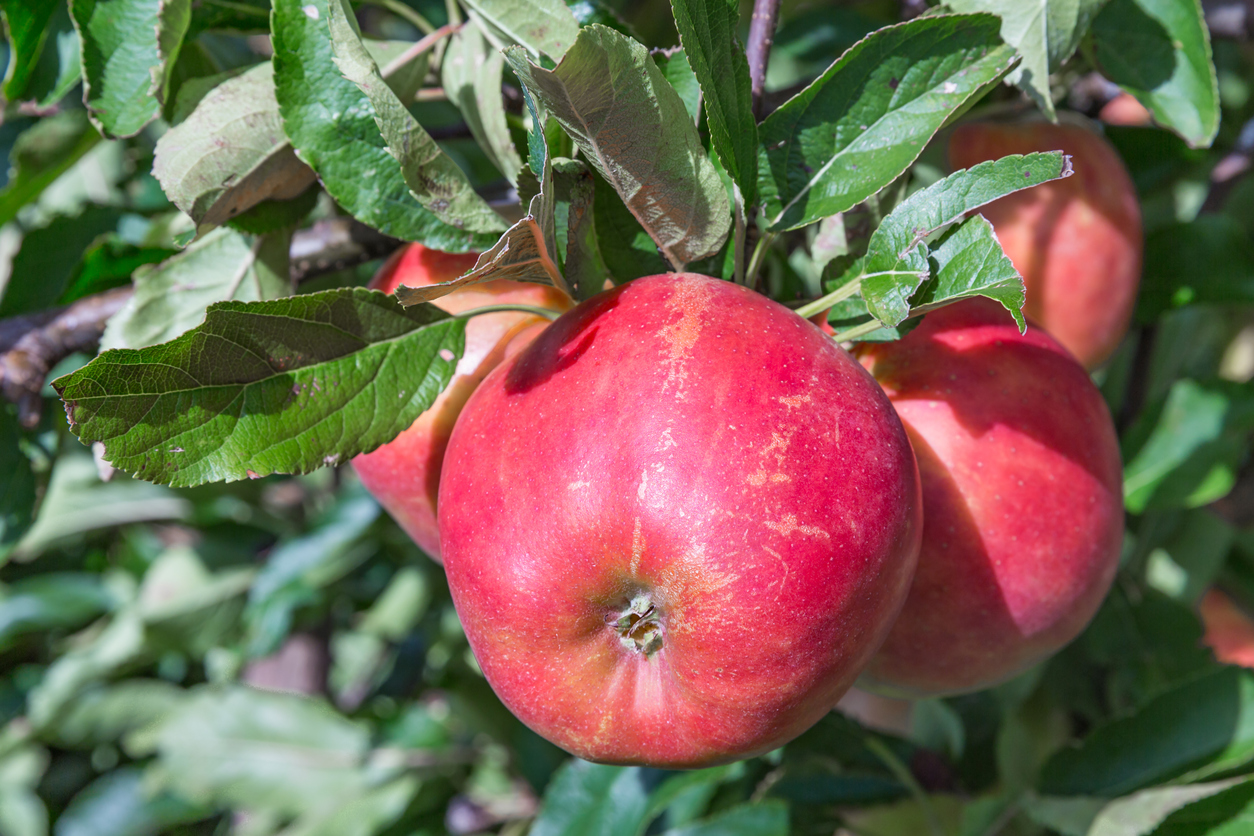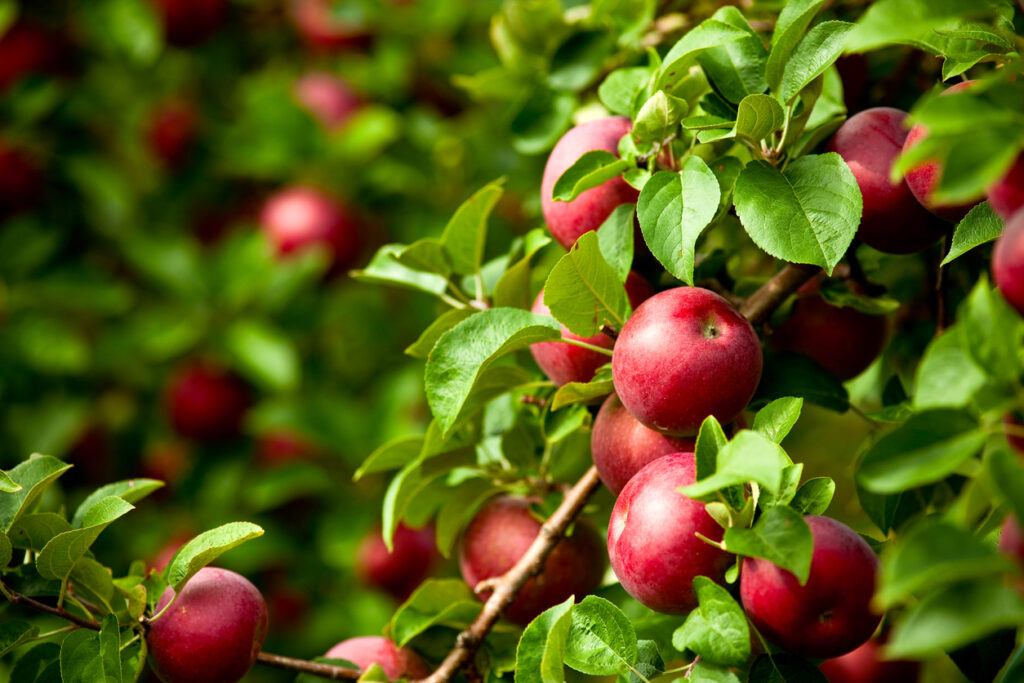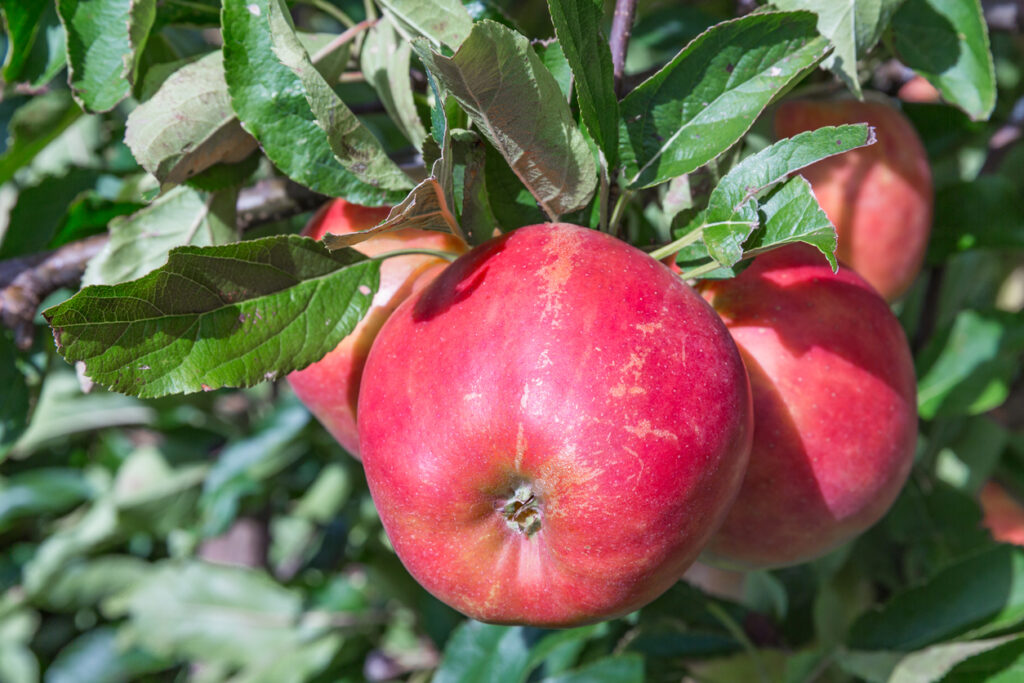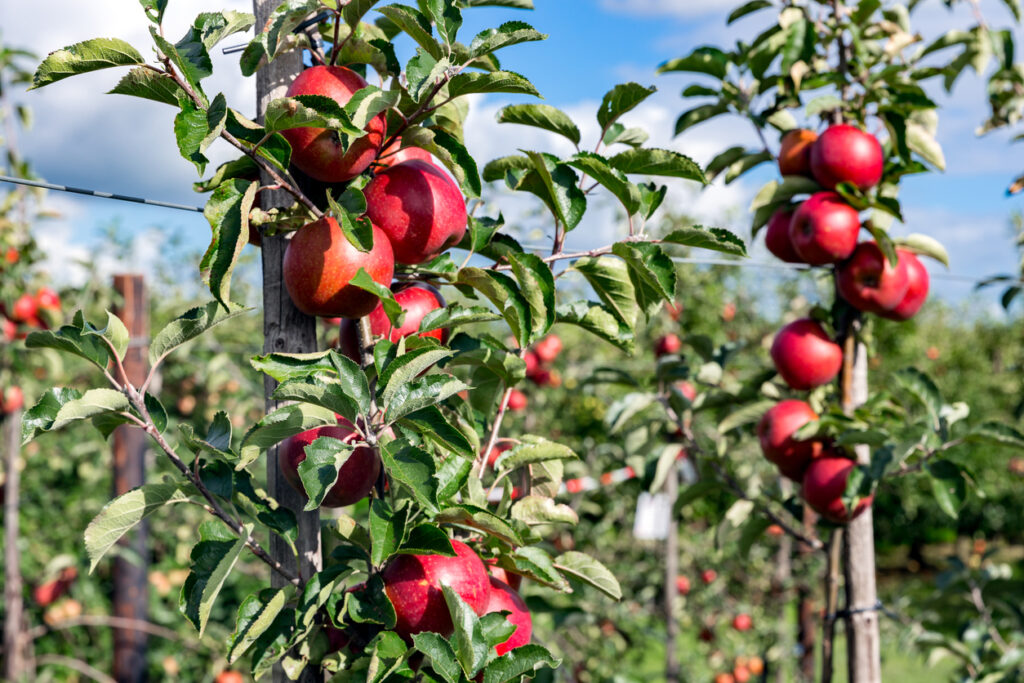Apple Tree Care – How To Grow And Harvest Apples
The old-timey saying goes, an apple a day keeps the doctor away. While that axiom appears to be too optimistic, the benefits of apples on your dining table cannot be exaggerated. The juicy apple is 86 percent water and packs a punch with fibers, carbohydrates, and trace amounts of fat and protein. You can use the versatile apple as applesauce and apple butter or in fruit salads apple pies, desserts, and stuffings. Of course, you can still the shiny apple raw off the tree. In short, there are many ways you can integrate apples into your daily culinary plans.
And being an avid gardener, the first question that pops in your mind is, how can I grow an apple tree and harvest homegrown apples right there in my garden? That’s what we’re here to talk about today.
Apple Trees At a Glance
The average apple tree (Malus domestica) stands upright and reaches modest heights between 6 to 15 feet depending on the cultivar and growing conditions. In the wild, the tree could tower over 30 feet. But you can always prune it and manage its size to create the shape and height that suits you. Remember, you’ll need to thin and harvest the fruits so you don’t want the tree to grow out of proportion.
The leaves of the tree are usually dark green with an oval shape. The edges of the leaves are serrated and the underside is covered with soft down. The new leaves appear in the spring along with the flowers. The five-petaled blooms are usually white with pink edges. Each flower in the cluster is about one and a half inches wide. Keep an eye on the flower in the center of the cluster. It’s usually called the king bloom and produces a larger orb than the surrounding flowers.
By the end of the summer, all apples on the tree become ripe. The color varies and usually comes in shades of red, yellow, russeted, pink, or green. The size of the ripe apples also varies and ranges from two and a half to three and a half inches. Smaller varieties are used for making juice. In the fall, the apple tree sheds off its leaves and goes into dormancy until the next spring.
Apple Tree Varieties
There are more apple tree varieties and cultivars than one person can grow in one lifetime. So Which cultivar to choose? Usually, you’d want to make sure the variety you select can actually grow in your zone. Here are some popular cultivars and varieties to help you narrow down your decision.
- Gravenstein: A relatively large tree that grows to 15 feet at most. This cultivar was first developed in Denmark and the juicy fruits are your best option for cider and sauce. It grows well in zones 2 to 9 and requires frequent harvesting since not all fruits ripen at once.
- McIntosh: These famous apples are red when ripe and have a tarty taste and a crunchy texture. The average tree reaches 20 feet with ease and thrives in zones 4 to 7. The tree has a high tolerance to cold weather and has unmistakable ornamental value. Eat the fruits fresh or bake them in pies.
- Arkansas Black: A hardy tree that grows in zones 4 to 8. It reaches 16 feet on average and the ripe fruit has dark skin. The juicy and sweet flesh is cream in color or sometimes golden. Best used for cooking, the ripe apple is too hard to munch on.
- Fuji: A Japanese cultivar that produces juicy and succulent fruits to snack on. The apple cider you make out of it is worth every ounce of hard work you put into growing the tree. The mature tree averages between 10 to 15 feet and grows in hardiness zones 6 to 9.
- Granny Smith: No apple varieties list is complete without mentioning the Granny Smith cultivar. The green skin of the ripe apple hides white crunch flesh packed with flavors. The sturdy tree reaches 20 feet on maturity and thrives in warmer climates. It grows in zones 6 to 9 although the apples become ripe in the fall.
- Pink Lady: A dainty variety that is popular in the grocery store. The tree averages 20 feet in the right conditions and needs the climate of zones 6 to 9 for the best crop. After you harvest the ripe pink apples, store them for at least four weeks before you eat them. The flavor and tartiness get better with time.
How To Grow Apple Trees
Usually, when you plan to grow an apple tree in your garden, you’d need to grow more than one tree. This is required for pollination. You could still rely on the apple tree growing in your neighbor’s garden to pollinate your flowers. Just make sure you choose the right variety that flowers at the same time as the other apple tree. Here are the steps for planting an apple tree in your garden.
-
- Select a spot in your garden that gets full sun about 6 hours a day and make sure you have enough space to accommodate the height and canopy of the mature tree.
- Clear the weeds and debris from the area and break the topsoil.
- Work in aged manure and organic compost in the top 7 inches of the soil. You can also sprinkle in a cup or two of rabbit manure tea.
- Dig a hole in the soil as deep as the rootball of the tree and twice as wide.
- Examine the root system of the tree you bought at the nursery. If it’s dry, soak the roots in water overnight before planting it.
- Loosen the soil in the hole and spread the roots of the tree before planting it.
- Lower the tree in the hole and make sure the soil mark on the tree aligns with the surface of the hole.
- Fill back the hole with a mixture of soil and rotted manure. Pack the soil to push out air pockets and help the tree stand upright.
- If you’re planting more than one tree, space the trees 18 feet apart but no more than 50 feet apart to ensure cross-pollination.
Apple Trees Care
Apart from the complex pollination process that requires another apple tree in the vicinity, the care of the apple trees is no different than other maintenance work for other trees. After the flowers pollinate and the fruits develop, you’ll need to thin them out before they ripen.
Watering
The watering needs of the apple tree decrease as the tree matures. The young apple trees need more water since the root system is underdeveloped. You’ll need to provide the young trees with about 15 gallons of water a week. If you have well-drained soil in the garden, you might need to water the trees more than 3 times a week. Cut down the watering frequency about 4 months into the first year of the tree’s life. Mature trees need irrigation only during the hot summer months or if there’s a drought. Always water the tree deeply and slowly.
Fertilizer
Apple trees are heavy feeders. While planting the young tree or sapling, you’ll need to mix in plenty of organic compost and rotted manure to get the tree to a good start. The richer the soil the healthier the tree and the more abundant the crops. It’s that simple. Most experts recommend relying heavily on organic materials and mulching for fertilization and refraining from chemical fertilizers that could damage the roots of the tree. The best time to fertilize the tree is in the early spring. Use a thick layer of mulching that spreads out to the edges of the tree’s canopy but without touching the trunk.
Pruning
As your apple trees grow in the garden, they develop a dense and vigorous canopy. The branches cross each other and eventually, the tree grows out of shape. Whether you’re growing the apple tree for its fruits or for ornamental purposes, you’ll need to prune it regularly. This improves air circulation, keeps the tree healthy, and prevents diseases. Pruning also allows each branch to get its share of sunlight to increase flowering and fruit production. Start pruning the young tree six months after planting it and continue to prune it as the tree gets older.
Thinning
Since the flowers of the apple trees grow in clusters, each flower will develop into a fruit after pollination. However, you need to thin out the flowers to ensure you get a well-developed apple. Experts recommend you keep the king bloom of the cluster. That’s the flower growing in the center of the cluster and removing the other flowers around it. Another option is to thin out the flowers to keep them 8 inches apart. Start thinning the flowers about 4 weeks after blooming. You might also have to thin the fruits further. If the tree still carries a heavy weight of fruits, thin out the sickly or smallish orbs to encourage the tree to focus its energy on the rest of the crop.
Pests and Diseases
The pests and diseases that attack apple trees are plentiful and can wreak havoc with your crop. You’ll be on your guard watching out for codling moths, green fruit worms, plum curculios, and apple maggots among many others. One option is to select a cultivar that resists diseases and pests. However, for most cases, spraying the trees in the spring with anti-insect oil will keep most pests away from the tree.
Harvesting Apples
Most apple trees are ready to harvest between August and October of each year. You’ll know that your apples are ripe when the skin color is no longer green. In the case of Granny Smith apples, the skin of the fruits remains green but becomes shiny and bright. The ripe apple is easy to detach from the stem. Most varieties ripen at the same time but some cultivars need frequent harvesting to gather all the crops at different times.
If you leave the apples on the tree past their harvest time, they will become soft and overripe. You can use them for cooking and baking apple pies.
Early season apples (those that ripen in August) don’t have a long shelf life and are better consumed fresh. Mid-season apples can be stored for a couple of weeks before they start to lose their tarty taste. Late season apples are good to store for up to 5 months. Always store the apples in a dark, dry, and well-ventilated place. Keep them on a tray without letting the individual apples touch each other.





